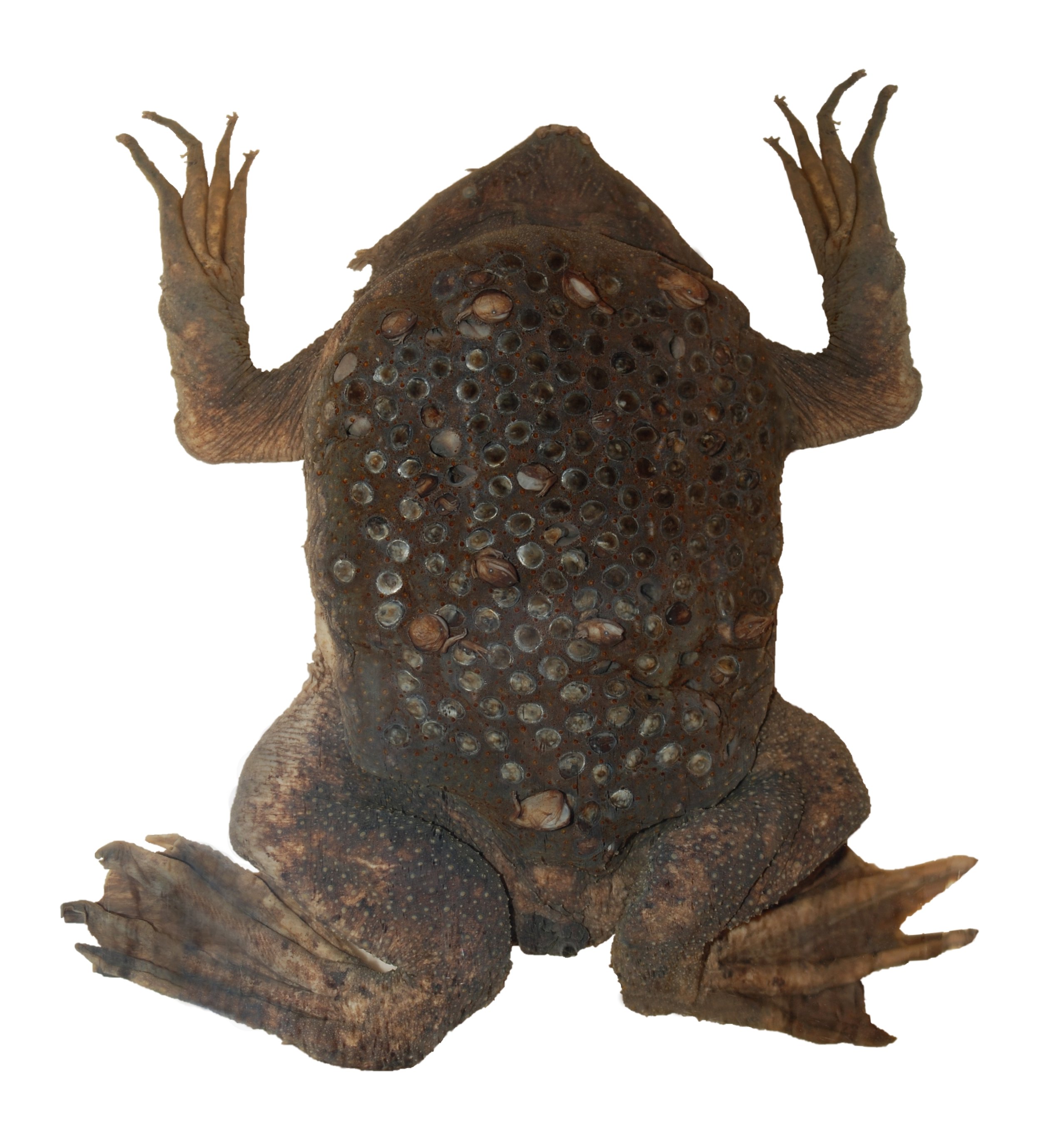The Creature Feature: 10 Fun Facts About the Surinam Toad
The Surinam toad (Pipa pipa) lives in tropical rainforests in South America and the Caribbean. They blend into the leaf litter at the bottoms of muddy, slow-moving waterways such as streams, ponds, and swamps. They tend to be about four to five inches long.They may look like leaf litter, but Surinam toads are some of the most unusual amphibians out there. Read on to learn what makes them so different.
1.The Surinam toad looks like a mottled brown leaf. It has an extremely flattened body, triangular-shaped head, and rough, pointy skin. The toad's nostrils are at the ends of two narrow tubes on its snout.
2. They have tiny eyes. The Surinam toad has beady, black eyes that are lidless and are located on the top of its head.
3. They don't sit like other amphibians. Unlike many frogs and toads, Surinam toads don't sit up on their front limbs. Instead, they are constantly in a splayed position, with their arms and legs pointing outwards.
4. Surinam toads have star-shaped toes. Their feet are webbed and their front toes have tiny, star-shaped tips. Every finger has four lobes, each of which is further split into more lobes.
5. They are suction feeders. Surinam toads don't have tongues or teeth. They use their long, sensitive fingers to search for food and then ambush it, stuffing it into their large mouths and swallowing it whole. Surinam toads feed on crustaceans, small fish, worms, and other invertebrates.
6. They can hold their breaths a long time. Surinam toads live an almost completely aquatic lifestyle, and can remain underwater for up to an hour.
7. Surinam toads have bumpy skin projections. They have flaps of skin or short tentacles on their upper lips, chins and at the corners of their jaws. Although they are covered in wart-like bumps, they have a slippery texture.
8. Their mating call is different from other frogs and toads. Unlike most frogs and toads, Surinam toad males do not attract females with croaks. Instead, they produce a sharp, metallic, clicking sound that is heard underwater. The sound is produced by snapping the hyoid bone in their throats.
9. Surinam toads do somersaults mid-coitus. When two Surinam toads mate, the male grasps the female in what's known as amplexus. During amplexus, which can last as long as 12 hours, the two toads perform acrobatic feats like flipping through the water in arcs.
10. Female Surinam toads incubate their babies in their backs. A female releases 60-100 eggs during mating, which the male fertilizes before they become embedded in the skin on her back. Over the next few days, her skin grows up and around the eggs, forming a honeycomb-like structure of pockets. Her larvae develop through the tadpole stage inside these pockets. After three to four months, the fully formed toadlets emerge from their mother's skin. Each one is less than an inch long, looking like a miniature adult.
References and Other Resources:
Cannatella, D. and Trueb, L. (1986). Systematics, Morphology, and Phylogeny of Genus Pipa (Anura: Pipidae). Herpetologica 42(4): 412-449.Carreno, C.A.and Nishikawa, K.C. (2010). Aquatic feeding in pipid frogs: the use of suction for prey capture. The Journal of Experimental Biology213(12): 2001-2008. doi: 10.1242/jeb.043380.Pipa pipa (Surinam Toad). Encyclopedia of Life. Accessed January 29, 2016 at http://eol.org/pages/332922/overview.
Rabb, G. and M. Rabb. (1963). Additional Observations on Breeding Behavior of the Surinam Toad, Pipa pipa. Copeia (4): 636-642.Rabb, G.B. and Snedigar, R. (1960). Observations on breeding and development of the Suriname toad, Pipa pipa.Copeia (1): 40-44.Suriname Toad (Pipa pipa). Arkive. Accessed January 29, 2016 at http://www.arkive.org/suriname-toad/pipa-pipa/.
Wandzel, K. 1999. "Pipa pipa,” Animal Diversity Web. Accessed January 29, 2016 at http://animaldiversity.org/accounts/Pipa_pipa/.



